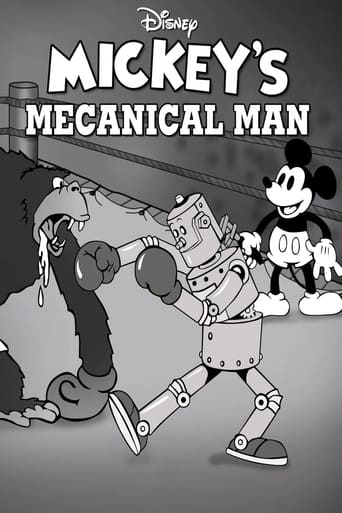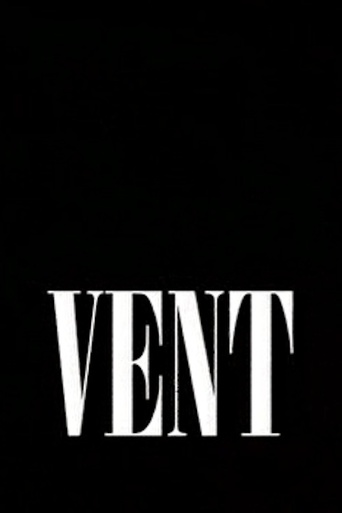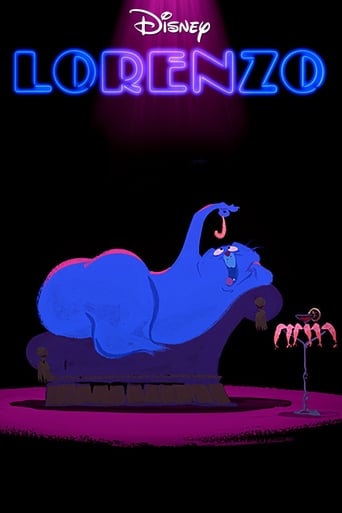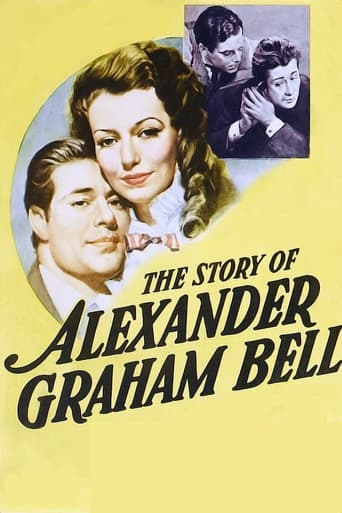


Mickey's Mechanical Man
Mickey has built a robot to compete in the boxing ring against the giant gorilla, the Kongo Killer. Whenever it hears Minnie's car horn, it goes crazy and starts punching any picture of Killer that it sees, even if it's on a brick wall, thus hurting itself. Mickey manages to barely patch his robot together to take on Killer, but after some early success, it gets pummeled by the ape. Minnie fetches the car horn, which brings it back, and it trounces Killer, then flies apart.
-
- Cast:
- Walt Disney , Marcellite Garner


Similar titles

Reviews
Fresh and Exciting
Although it has its amusing moments, in eneral the plot does not convince.
It is not deep, but it is fun to watch. It does have a bit more of an edge to it than other similar films.
This film is so real. It treats its characters with so much care and sensitivity.
This is an early Mickey Mouse cartoon produced by the Disney studio. There will be spoilers ahead:This is a very simple, basic cartoon. Mickey is training a robot to box against a gorilla (The Kongo Killer). Mickey times the robot by playing a piano and the robot is rather uninspired until Minnie blows her car horn, at which point the robot goes amok, busting a safe, punching through a wall poster of the gorilla (and the wall it's hanging on) and going outside, knocking itself out. Minnie revives it with here horn and it goes careening off to the arena, punching wildly and furiously.Once the fight starts, the robot reverts to being tentative and uninspired. The gorilla has no such problem and basically mauls the robot, turning him almost into a junk pile. As the referee is counting him out, Minnie remembers her horn, gets it and blows it, again reviving the robot, to the point where it mops up the ring with the Kongo Killer. The robot wins in the best scene in the short. The end makes up for the somewhat slow pacing in the beginning of the short.Tis short is available on the Disney Treasures Mickey Mouse in Black and White, Volume Two DVD set. This short is worth watch at least once.
The basic plot for "Mickey's Mechanical Man" was very familiar to me, as I've seen it at least twice before in Three Stooges' shorts. While IMDb says that the plot to "Punch Drunks" (1934) was entirely written by the Stooges themselves, the film came out a year AFTER this Disney cartoon--making you wonder just how original their screenplay was. In addition, the Shemp Howard remade the film a decade later as "A Hit and a Miss". Watch the Stooges film--you'll see what I mean about the plots being virtually identical in many ways.Mickey has built a robot who is a boxer. However, the robot isn't very good and everyone assumes the Kongo Killer (a gorilla) is going to win (where is PETA when you need them?!). However, Mickey has learned a secret--when his robot hears a horn, it goes crazy and becomes amazingly aggressive--to the point where it is almost impossible to stop.The main difference between this decent but not exactly inspired cartoon and the Stooge short is that when Curly hears the song "Three Blind Mice", he goes crazy and is unstoppable. Otherwise, it's the same. I wonder, though, why repeat the Disney plot when it isn't very good in the first place?! It's only a so-so cartoon--and certainly not among the best Mickey made in this era.
This is one of the strangest Disney cartoons I've encountered, so strange it feels more like a product of the Fleischer studio. In the opening moments it's established that there's going to be a boxing match between a robot (identified as Mickey's Mechanical Man) and a gorilla (called The Kongo Killer), and that's it for exposition. Next thing you know, Mickey is banging away at a piano at his training headquarters, urging the robot to punch his sparring partner—a sparring partner which happens to be a safe dangling from the ceiling, bearing a picture of the gorilla. There's no explanation for any of this, no back story, we're just expected to roll with it. Roll with it we do, and everything unfolds as it would in a crazy dream.When Minnie pulls up outside in her cute little car and tootles the horn, the Mechanical Man suddenly and inexplicably goes berserk. He bashes the dangling safe to pieces, briefly runs amok, and then collapses in a heap. Mickey nervously explains to Minnie that the sound of her horn drives the robot mad, but she laughs this off—despite what she's just witnessed—and honks again. The Mechanical Man revives and resumes running amok, this time throwing a crowd of pedestrians into a panic. Once more, the robot's crazed fit ends only when he collapses in a heap on the sidewalk, provoking contemptuous laughter from the crowd.By this point, the robot is a figure of sympathy. By technological standards he strikes us as kind of neurotic and unpredictable, and probably no match for the Kongo Killer. Suspense builds as the boxing match begins, and the contenders are introduced to the crowd. Sure enough, like all gorillas in cartoons, the Kongo Killer turns out to be a fearsome, slavering beast. (I was an adult before I learned that in reality gorillas in the wild are peaceful and even shy unless provoked, but in old-time Hollywood all the apes were angry monsters.) When Mickey's Mechanical Man is introduced he attempts to wave to the crowd but his arm falls off, prompting more laughter. The fight begins, and our hero the robot seizes an early advantage with some rhythmic punches, but the gorilla soon rises to the occasion and pummels his opponent into scrap metal. As the Mechanical Man lies semi-conscious on the mat, he envisions little mechanical birds encircling his head. Just as things look bleak, Minnie belatedly remembers that auto horn of hers and toddles out to the parking lot to retrieve it . . .I've seen a lot of Disney cartoons, but nothing else quite like this one. It all flows along smoothly enough while you're watching, but after it's over—and it ends with a genuinely weird wrap-up gag—you find yourself wondering what on earth you've just witnessed. That's the way I usually feel after experiencing some of the more surreal Betty Boop episodes. Everything about this short is Fleischer-like, from the dissolute-looking announcer who introduces the boxers to the stylized appearance of the crowd in the arena. We never find out how Mickey acquired this robot, why the car horn drives it mad, or why the poor thing is supposed to fight a gorilla in the first place. Well, I guess if they'd tried to explain any of this the short would have forfeited its quirky charm. As it stands, Mickey's Mechanical Man is perhaps the looniest product of its studio, and a worthy rival to the concurrent output of the Fleischer gang.
A Walt Disney MICKEY MOUSE Cartoon.MICKEY'S MECHANICAL MAN, a boxing robot, engages in the Battle of the Century against The Kongo Killer, who's a real ape.This little black & white cartoon is a lot of fun, with The Mouse trying to control his unusual contraption. Good animation throughout. That's Walt supplying Mickey's squeaky voice.Walt Disney (1901-1966) was always intrigued by drawings. As a lad in Marceline, Missouri, he sketched farm animals on scraps of paper; later, as an ambulance driver in France during the First World War, he drew figures on the sides of his vehicle. Back in Kansas City, along with artist Ub Iwerks, Walt developed a primitive animation studio that provided animated commercials and tiny cartoons for the local movie theaters. Always the innovator, his ALICE IN CARTOONLAND series broke ground in placing a live figure in a cartoon universe. Business reversals sent Disney & Iwerks to Hollywood in 1923, where Walt's older brother Roy became his lifelong business manager & counselor. When a mildly successful series with Oswald The Lucky Rabbit was snatched away by the distributor, the character of Mickey Mouse sprung into Walt's imagination, ensuring Disney's immortality. The happy arrival of sound technology made Mickey's screen debut, STEAMBOAT WILLIE (1928), a tremendous audience success with its use of synchronized music. The SILLY SYMPHONIES soon appeared, and Walt's growing crew of marvelously talented animators were quickly conquering new territory with full color, illusions of depth and radical advancements in personality development, an arena in which Walt's genius was unbeatable. Mickey's feisty, naughty behavior had captured millions of fans, but he was soon to be joined by other animated companions: temperamental Donald Duck, intellectually-challenged Goofy and energetic Pluto. All this was in preparation for Walt's grandest dream - feature length animated films. Against a blizzard of doomsayers, Walt persevered and over the next decades delighted children of all ages with the adventures of Snow White, Pinocchio, Dumbo, Bambi & Peter Pan. Walt never forgot that his fortunes were all started by a mouse, or that simplicity of message and lots of hard work always pay off.





